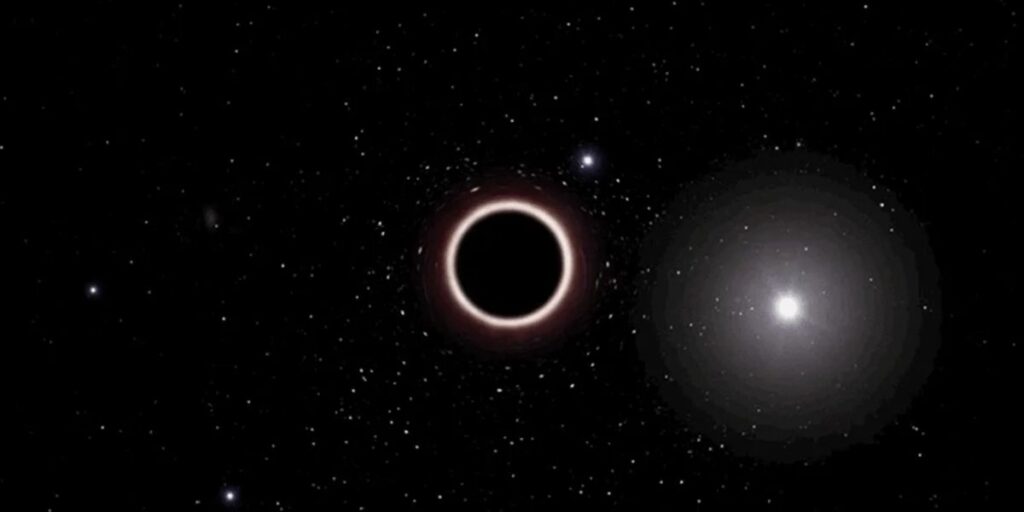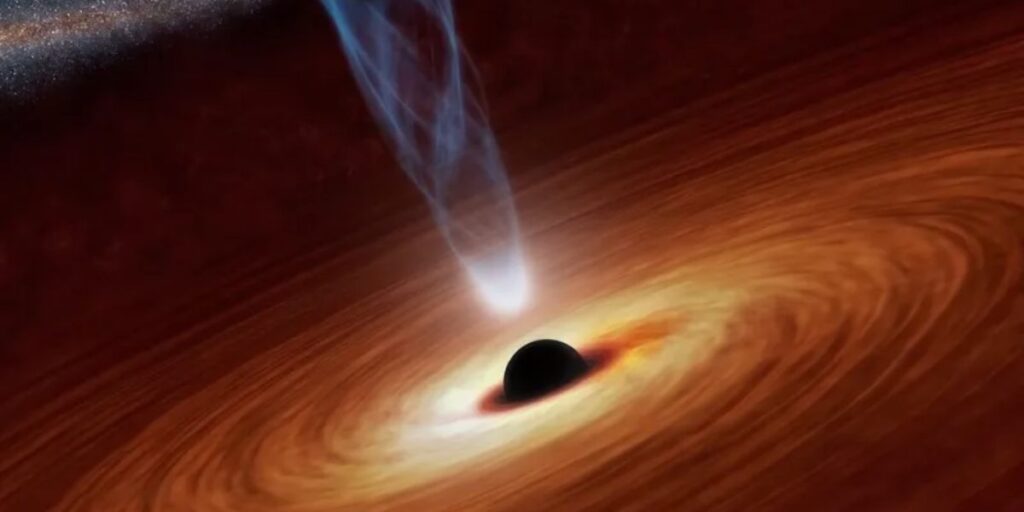Black holes are among the most enigmatic and awe-inspiring phenomena in the universe. These cosmic giants hold a deep mystery that has fascinated scientists and the general public alike. Despite decades of study, black holes continue to challenge our understanding of physics, space, and time. What exactly are black holes? How do they form? And what mysteries remain? Let’s delve into the strange and mystery of black holes.
What is a Black Hole?
A black hole is a region in space where gravity is so strong that nothing, not even light, can escape from it. This occurs because a massive amount of matter is compressed into a very small space. creating a gravitational pull so intense that it warps the fabric of spacetime itself. The boundary surrounding a black hole, beyond which nothing can return, is called the event horizon. Once something crosses the event horizon, it is lost to the black hole’s depths forever.
How Do Black Holes Form?
Most black holes form when massive stars exhaust their nuclear fuel and undergo a supernova explosion. The outer layers of the star are ejected into space, while the core collapses under its gravitational pull. If the core’s mass is more than three times the mass of the Sun, it can collapse into a singularity—a point of infinite density where the laws of physics as we know them break down.
There are also supermassive black holes, which exist at the centers of galaxies and are millions or even billions of times more massive than our Sun. These cosmic behemoths are thought to form differently, possibly through the merging of smaller black holes or the collapse of vast clouds of gas in the early universe. Despite being crucial to the structure of galaxies, the exact process of their formation remains one of the biggest mysteries in astrophysics.
The Singularity: Where the Laws of Physics Break Down
At the heart of every black hole lies a singularity. A point where density becomes infinite and spacetime curvature becomes extreme. According to Einstein’s theory of general relativity. This is a region where the laws of physics no longer apply in any conventional sense. The concept of a singularity raises significant questions: How can matter be infinitely compressed? What happens to the information that falls into a black hole?
Physicists believe that to truly understand the singularity, we need a quantum theory of gravity—a theory that unites general relativity with quantum mechanics. However, such a theory remains elusive, leaving the true nature of black hole singularities as one of the biggest puzzles in modern science.
The Information Paradox: Where Does Everything Go?
One of the most perplexing mysteries surrounding black holes is the information paradox. According to quantum mechanics, information about the physical state of any object must be preserved. Yet, when matter falls into a black hole, it appears to be destroyed beyond the event horizon. This seems to violate the principles of quantum mechanics.
In the 1970s, physicist Stephen Hawking discovered that black holes aren’t entirely black—they emit radiation, now known as Hawking radiation. Over time, this radiation causes black holes to lose mass and eventually evaporate. But if a black hole evaporates and disappears, what happens to the information that fell into it? Does the information vanish with the black hole, or is it somehow preserved in the radiation? This paradox has sparked intense debate and remains unsolved. However, some recent theories suggest that information might be encoded in subtle patterns within the radiation or near the event horizon.
The Role of Black Holes in the Universe
Despite their mysterious nature, black holes play a critical role in shaping the cosmos. Supermassive black holes, in particular, are thought to be key players in galaxy formation and evolution. The gravitational pull of these giants can influence the motion of stars and gas, and their activity can drive powerful jets of energy that regulate star formation in galaxies. Observations of distant galaxies show that almost every large galaxy has a supermassive black hole at its center, suggesting that they may be essential to the birth and development of galaxies.
Can We See a Black Hole?
Because black holes do not emit light, they cannot be observed directly. However, scientists can detect them through their interactions with nearby matter. When a black hole pulls in gas and dust from its surroundings. The material forms an accretion disk that heats up and emits X-rays, which can be detected by telescopes. Additionally, black holes reveal their presence through the gravitational influence they exert on nearby stars.
In 2019, astronomers achieved a groundbreaking milestone by capturing the first-ever image of a black hole. Using the Event Horizon Telescope, a global network of radio telescopes, scientists were able to image the supermassive black hole at the center of the galaxy M87. The image showed the shadow of the black hole against a glowing ring of gas—a visual confirmation of decades of theoretical predictions.
The Ongoing Mystery
While we have made significant strides in understanding black holes, many questions remain unanswered. What lies inside the event horizon? How can we reconcile general relativity with quantum mechanics to describe black hole singularities? Will we ever fully resolve the information paradox?
Conclusion:
The mystery of black holes challenges our understanding of the universe on both the largest and smallest scales. As technology advances and our ability to observe the cosmos improves. We may one day unlock the secrets that lie within these cosmic giants. For now, black holes remain one of the most captivating and profound enigmas in astrophysics—dark and powerful reminders of the universe’s untold mysteries.





